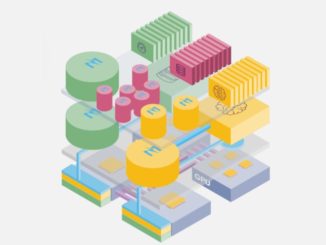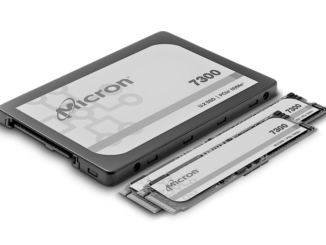
While on-premises datacenters are strategic to large enterprises, and will be for the foreseeable future, hybrid clouds and the edge are also an increasingly important part of the IT platform portfolio. But the road out of the datacenter and into the future with clouds and edges is not always an easy one for companies to navigate.
The portability of apps across highly distributed locations, and keeping track of the data and the cost of deploying hybrid clouds, are just some of the challenges facing organizations as they expand their workloads – and their data – out into clouds and edges.
“It has become clear that multicloud, multi-datacenter and edge environments will become increasingly common in order to meet the demands of data gravity and best serve end users and data analytics teams,” Radhika Krishnan, chief product officer at Hitachi Vantara, tells The Next Platform. “But this approach also comes with tremendous complexity as customers need to manage and integrate with multiple different cloud operating models for their applications, data and infrastructure.”
Hitachi Vantara is looking to ease the transition with a host of new products and services aimed at delivering the agility and scalability that are central to hybrid and private clouds. It’s part of a larger push by the company – which came to being in 2017 through the merging of Hitachi Insight Group, Hitachi Data Systems and Pentaho and the addition later of Hitachi Consulting – to evolve into more of a solutions company offering hardware, software and services to enterprises that are adopting hybrid cloud strategies.
It’s similar to evolutions that other traditional datacenter hardware makers, from Dell Technologies to Hewlett Packard Enterprise to Lenovo to Cisco Systems, are undergoing. A key is to understand that IT will be a single environment that stretches across multiple locations, Krishnan says.
“The datacenter is not going away, and the thinking that public cloud is for agile, cloud-native workloads and datacenters are for traditional workloads is not a reality for many customers that need to modernize mission-critical workloads and manage sensitive data,” she says. “Customers are looking for simple and consistent hybrid cloud operating model that has the cloud-like agility and automation and that can seamlessly connect their applications, data and infrastructure across on-prem, near-cloud, and public cloud.”
Delivering such capabilities is key to vendors like Hitachi Vantara. According to a report last year from IT management company Flexera, 92 percent of enterprises have a multicloud strategy, while 80 percent are embracing hybrid clouds. In addition, 31 percent spend more than $12 million annually in public clouds.
Hitachi Vantara is leaning back on the storage expertise from its Hitachi Data Systems days for part of the product offerings. The company is unveiling Virtual Storage Software Block (VSS Block) a software-defined data platform that adds to its larger virtual storage platform to include cloud-native applications running on X86 servers. It leverages the vendor’s Storage Virtual Operating System (SVOS) and provides a single data plane for mid-range, enterprise and software-defined storage.
It also has Hitachi’s Polyphase Erasure Coding to improve data read performance and efficiency and supports mirroring and erasure coding. It’s compatible with storage that use iSCSI and Fibre Channel host connections.
In addition, the company is rolling out its VSP E1090, a new NVM-Express mid-range storage array that includes scale-out capabilities for virtual storage. It got low latency of 41 microseconds, 8.4 million IOPS performance, data-in-place migration and fast install that organizations can do themselves. In addition, Hitachi’s Replication Plug-In for Containers automates replication between Kubernetes clusters and storage systems in different sites.
Hitachi Vantara’s Ops Center Clear Sight is a cloud management tool that uses artificial intelligence (AI) that brings cloud-based report and analytics to the Hitachi Virtual Storage Platform (VSP). In addition, Hitachi Cloud Connect offers a near-cloud tool that integrates into the public cloud and extends the data fabric, supporting cloud applications from public cloud providers.

“Companies can deploy in the cloud the same enterprise-class security, reliability, scalability and resilience that VSP delivers in their own datacenter,” Krishnan says. “They get management, monitoring and predictive analytic capabilities to properly control their entire storage environment, regardless of location. Even deployments that span multiple locations worldwide and a company’s datacenters are empowered to from a single location.”
The vendor is using its Unified Compute Platform RS (UCP RS) software-defined hybrid cloud platform to deliver a “cloud in a box.” It’s powered by VMware’s Cloud Foundation with Tanzu – VMware’s Kubernetes portfolio – to drive consistency between on-premises and public cloud environments. Organizations can deploy apps on virtual machines or Kubernetes containers through a single management experience.
The vendor is building off a partnership it has had with VMware for more than two decades – well before the introduction of Hitachi Vantara – offering integrations with such tools as vCenter Server, vRealize cloud automation, vSAN, VMware Cloud and Site Recovery Manager, Krishnan says.
At the same time, the joint offering created with Cisco – Hitachi Adaptive Solutions – now includes Hitachi Vantara’s latest VSP storage technology and supports Cisco’s new UCS X-Series Compute modular system, all of which is managed by Cisco’s Intersight cloud platform.
Hitachi Vantara also is announcing its Application Reliability Services, a mixture of cloud consulting and management services for managing and automating cloud workloads. The services include Site Reliability Engineering (SRE) principles and AI-powered automation of the software development lifecycle and workload management. The company claims the services will improve application reliability and the time to detect and recover from faults by more than 25 percent each and improve the change failure rate by 15 percent.
Enterprises have rapidly migrated and modernized cloud workloads and have created DevOps teams to accelerate the delivery of new software features, Krishnan says. A problem is that they haven’t modernized their IT process as quickly, which can lead to reliability issues. She adds that reports are showing almost 40 percent of organizations are seeing app downtime and 90 percent of them are pointing to migration, security and troubleshooting issues.
Hitachi Vantara is aiming to address this with an SRE-led approach to integrate operations with DevOps by using software engineering to automate and simplify workload management while designing for application reliability, Krishnan says.





Be the first to comment